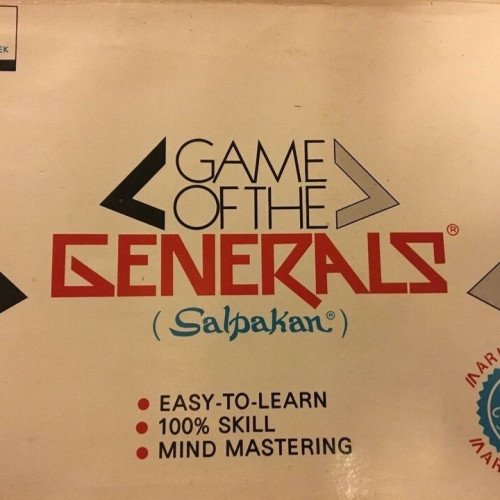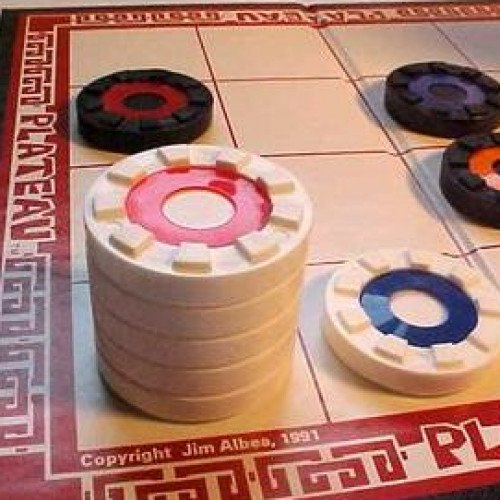GAME OF THE GENERALS VS PLATEAU

GAME OF THE GENERALS
The Game of the Generals, also called GG or GOG as it is most fondly called, or simply The Generals, is an educational war game invented in the Philippines by Sofronio H. Pasola Jr. in 1970. Its Filipino name is "Salpakan." It can be played within twenty to thirty minutes. It is designed for two players, each controlling an army, and a neutral arbiter (sometimes called a referee or an adjutant) to decide the results of "challenges" between opposing playing pieces, that like playing cards, have their identities hidden from the opponent. The game simulates armies at war trying to overpower, misinform, outflank, outmaneuver, and destroy each other. It optimizes the use of logic, memory, and spatial skills. It simulates the "fog of war" because the identities of the opposing pieces are hidden from each player and can only be guessed at by their location, movements, or from the results of challenges. The game allows only one side's plan to succeed, although a player may change plans during the course of the game. In addition, there are two different ways of winning the game (see below). Certain strategies and tactics, however, allow both sides the chance of securing a better idea of the other's plan as the game progresses. Players can also speak or gesture to their opponents during matches, hoping to create a false impression about the identity of their pieces or their overall strategy. This game was invented by Sofronio H. Pasola, Jr. with the inspiration of his son Ronnie Pasola. The Pasolas first tried the Game of the Generals on a chessboard. Even then, the pieces had no particular arrangement. There were no spies in the experimental game; but after Ronnie Pasola remembered the James Bond movies and Mata Hari, he added the Spies. Making the pieces hidden was the idea of the Pasolas after remembering card games. The Game of the Generals' public introduction was on February 28, 1973. After the game was made, it angered many Filipino chess players thinking that Pasola was trying to denigrate or supplant chess.
Statistics for this Xoptio

PLATEAU
Plateau is a two-player abstract strategy board game invented by Jim Albea. The game was developed over a two-year period culminating in its present form on May 12, 1986. The original name for the game was Pinnacle, but it was discovered that an older board/card game had that name, so around 1989 the name was changed to Plateau. From the 1980s through the 1990s Plateau was played at Science Fiction conventions mostly in the Southeastern United States. From the 1990s to the present, the game is played live at an online game site and via email. In 1997 a computer implementation of the game was created which facilitates email play and has a computer robot. Onboarding is adding one new piece to the play. This new piece can be placed anywhere that doesn't directly harm an opposing piece. For instance, you can onboard to any blank square or on top of any of your own pieces. The majority of Plateau moves are onboards. Instead of Onboarding or Moving, a player can choose to spend his turn exchanging prisoners. Prisoners are exchanged using the point values of the pieces. A simple value-for-value system is used. Since the pieces range in value from 1 point (for the mute) to 21 points (for the Ace) there are usually several combinations and options available for the players. The player initiating the exchange selects the pieces he wishes to exchange. These pieces will all add up to some point value. The responding player then has four options depending on the point values of the prisoners that he holds.